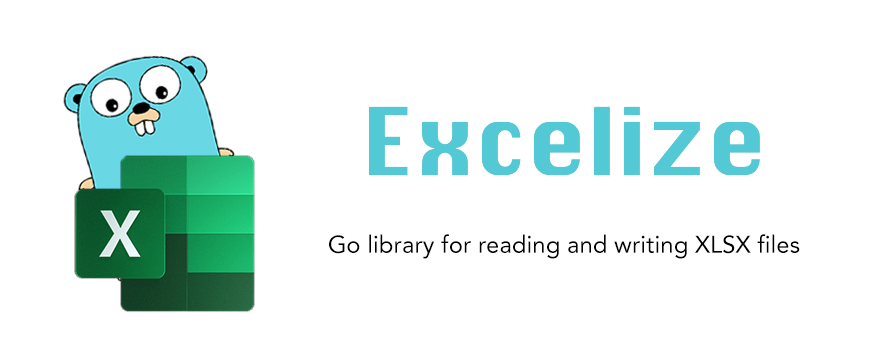Instead of re-encoding the full sheet to change the namespaces in the encoded bytes, read the sheet again and do the byte replacements there. In this case, file access ends up being more performant than marshaling the sheet back to XML. In the SharedStrings test, ensure the strings are actually read. Fix #439 |
||
|---|---|---|
| .github/ISSUE_TEMPLATE | ||
| test | ||
| .gitignore | ||
| .travis.yml | ||
| CODE_OF_CONDUCT.md | ||
| CONTRIBUTING.md | ||
| LICENSE | ||
| PULL_REQUEST_TEMPLATE.md | ||
| README.md | ||
| README_zh.md | ||
| adjust.go | ||
| adjust_test.go | ||
| calcchain.go | ||
| cell.go | ||
| cell_test.go | ||
| cellmerged.go | ||
| cellmerged_test.go | ||
| chart.go | ||
| chart_test.go | ||
| codelingo.yaml | ||
| col.go | ||
| col_test.go | ||
| comment.go | ||
| datavalidation.go | ||
| datavalidation_test.go | ||
| date.go | ||
| date_test.go | ||
| docProps.go | ||
| docProps_test.go | ||
| errors.go | ||
| errors_test.go | ||
| excelize.go | ||
| excelize.png | ||
| excelize_test.go | ||
| file.go | ||
| go.mod | ||
| go.sum | ||
| hsl.go | ||
| lib.go | ||
| lib_test.go | ||
| logo.png | ||
| picture.go | ||
| picture_test.go | ||
| rows.go | ||
| rows_test.go | ||
| shape.go | ||
| sheet.go | ||
| sheet_test.go | ||
| sheetpr.go | ||
| sheetpr_test.go | ||
| sheetview.go | ||
| sheetview_test.go | ||
| sparkline.go | ||
| sparkline_test.go | ||
| styles.go | ||
| styles_test.go | ||
| table.go | ||
| templates.go | ||
| vmlDrawing.go | ||
| xmlApp.go | ||
| xmlCalcChain.go | ||
| xmlChart.go | ||
| xmlComments.go | ||
| xmlContentTypes.go | ||
| xmlCore.go | ||
| xmlDecodeDrawing.go | ||
| xmlDrawing.go | ||
| xmlSharedStrings.go | ||
| xmlStyles.go | ||
| xmlTable.go | ||
| xmlTheme.go | ||
| xmlWorkbook.go | ||
| xmlWorksheet.go | ||
README.md

Excelize
Introduction
Excelize is a library written in pure Go providing a set of functions that allow you to write to and read from XLSX files. Supports reading and writing XLSX file generated by Microsoft Excel™ 2007 and later. Supports saving a file without losing original charts of XLSX. This library needs Go version 1.8 or later. The full API docs can be seen using go's built-in documentation tool, or online at godoc.org and docs reference.
Basic Usage
Installation
go get github.com/360EntSecGroup-Skylar/excelize/v2
Create XLSX file
Here is a minimal example usage that will create XLSX file.
package main
import (
"fmt"
"github.com/360EntSecGroup-Skylar/excelize/v2"
)
func main() {
f := excelize.NewFile()
// Create a new sheet.
index := f.NewSheet("Sheet2")
// Set value of a cell.
f.SetCellValue("Sheet2", "A2", "Hello world.")
f.SetCellValue("Sheet1", "B2", 100)
// Set active sheet of the workbook.
f.SetActiveSheet(index)
// Save xlsx file by the given path.
err := f.SaveAs("./Book1.xlsx")
if err != nil {
fmt.Println(err)
}
}
Reading XLSX file
The following constitutes the bare to read a XLSX document.
package main
import (
"fmt"
"github.com/360EntSecGroup-Skylar/excelize/v2"
)
func main() {
f, err := excelize.OpenFile("./Book1.xlsx")
if err != nil {
fmt.Println(err)
return
}
// Get value from cell by given worksheet name and axis.
cell, err := f.GetCellValue("Sheet1", "B2")
if err != nil {
fmt.Println(err)
return
}
fmt.Println(cell)
// Get all the rows in the Sheet1.
rows, err := f.GetRows("Sheet1")
for _, row := range rows {
for _, colCell := range row {
fmt.Print(colCell, "\t")
}
fmt.Println()
}
}
Add chart to XLSX file
With Excelize chart generation and management is as easy as a few lines of code. You can build charts based off data in your worksheet or generate charts without any data in your worksheet at all.

package main
import (
"fmt"
"github.com/360EntSecGroup-Skylar/excelize/v2"
)
func main() {
categories := map[string]string{"A2": "Small", "A3": "Normal", "A4": "Large", "B1": "Apple", "C1": "Orange", "D1": "Pear"}
values := map[string]int{"B2": 2, "C2": 3, "D2": 3, "B3": 5, "C3": 2, "D3": 4, "B4": 6, "C4": 7, "D4": 8}
f := excelize.NewFile()
for k, v := range categories {
f.SetCellValue("Sheet1", k, v)
}
for k, v := range values {
f.SetCellValue("Sheet1", k, v)
}
err := f.AddChart("Sheet1", "E1", `{"type":"col3DClustered","series":[{"name":"Sheet1!$A$2","categories":"Sheet1!$B$1:$D$1","values":"Sheet1!$B$2:$D$2"},{"name":"Sheet1!$A$3","categories":"Sheet1!$B$1:$D$1","values":"Sheet1!$B$3:$D$3"},{"name":"Sheet1!$A$4","categories":"Sheet1!$B$1:$D$1","values":"Sheet1!$B$4:$D$4"}],"title":{"name":"Fruit 3D Clustered Column Chart"}}`)
if err != nil {
fmt.Println(err)
return
}
// Save xlsx file by the given path.
err = f.SaveAs("./Book1.xlsx")
if err != nil {
fmt.Println(err)
}
}
Add picture to XLSX file
package main
import (
"fmt"
_ "image/gif"
_ "image/jpeg"
_ "image/png"
"github.com/360EntSecGroup-Skylar/excelize/v2"
)
func main() {
f, err := excelize.OpenFile("./Book1.xlsx")
if err != nil {
fmt.Println(err)
return
}
// Insert a picture.
err = f.AddPicture("Sheet1", "A2", "./image1.png", "")
if err != nil {
fmt.Println(err)
}
// Insert a picture to worksheet with scaling.
err = f.AddPicture("Sheet1", "D2", "./image2.jpg", `{"x_scale": 0.5, "y_scale": 0.5}`)
if err != nil {
fmt.Println(err)
}
// Insert a picture offset in the cell with printing support.
err = f.AddPicture("Sheet1", "H2", "./image3.gif", `{"x_offset": 15, "y_offset": 10, "print_obj": true, "lock_aspect_ratio": false, "locked": false}`)
if err != nil {
fmt.Println(err)
}
// Save the xlsx file with the origin path.
err = f.Save()
if err != nil {
fmt.Println(err)
}
}
Contributing
Contributions are welcome! Open a pull request to fix a bug, or open an issue to discuss a new feature or change. XML is compliant with part 1 of the 5th edition of the ECMA-376 Standard for Office Open XML.
Licenses
This program is under the terms of the BSD 3-Clause License. See https://opensource.org/licenses/BSD-3-Clause.
The Excel logo is a trademark of Microsoft Corporation. This artwork is an adaptation.
Some struct of XML originally by tealeg/xlsx. Licensed under the BSD 3-Clause License.
gopher.{ai,svg,png} was created by Takuya Ueda. Licensed under the Creative Commons 3.0 Attributions license.

